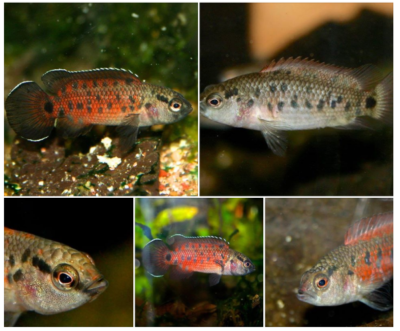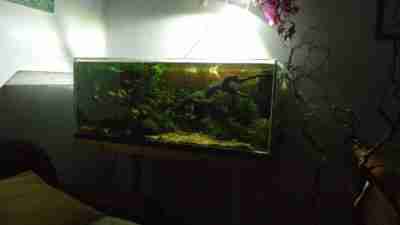 Badis Assamensis was originally thought to be only endemic to the river Brahmaputra in Assam, India from its 1937 discovery. Later it was found in another location in the northern region of West Bengal.
Badis Assamensis was originally thought to be only endemic to the river Brahmaputra in Assam, India from its 1937 discovery. Later it was found in another location in the northern region of West Bengal.
This species of aquarium fish comes from slow-moving stained water with sand substrate. Water lilies and trees often line the swamp-like water’s edge of their habitat. Many times the smaller species Badis badis can be found in the same areas as these giants, which can reach 65 to 75mm in length.
In nature Badis assamensis feeds on insects, worms, and some plankton. In the aquarium, they will do well on frozen or live brine shrimp, daphnia, and small cultured worms as supplements to good quality dried pellet or flake food. Mysis, Chironomus, chopped earthworms and enchitreidae also to round out feeding.
Some suitable biotope plants for these setups would be Microsorum, Ludwigia adscendens, and Hygrophylla polysperma. For riparian plants

These are rare Badis, endangered in nature, i hope to keep them generation after generation. – Marco Vaccari
Driftwood and leaf litter will also benefit the look of the aquarium and the health of the fish. Indian almond leaf, jackfruit leaf, and guava leaf can help and are readily available.
Badis assamensis can be bred rather easily in a 20 gallon or larger with a mature mating pair. Mating can occur at around one year of age. Hiding places of stones, plant pots, or coconut shells will encourage a stronger feeling of security which can help with initiating breeding.
Overall they are an easy species to breed but the length of time that maturity takes is often a setback for breeding programs.
Water conditions in captivity are pretty easy to provide for these fish too. 60F to 75F water temperatures are tolerable but you will have better results breeding when kept at the 72 to 74F range. In some warmer areas, these fish could be kept without heaters because of their tolerance for cooler water.

Deforestation and over-collection are the two biggest threats to Badis assamensis. Riverbank area where these fish are found are heavily forested. Farming and logging are main threats creating habitat destruction and changing habitat conditions. Collection for food as well as for the aquarium hobby in the Brahmaputra is also detrimental to the future of these fish.
Badis assamensis photos courtesy Marco Vaccari.
Plant photos courtesy Fazal Baboo
 Biotope One A Study of Flora and Fauna
Biotope One A Study of Flora and Fauna 


